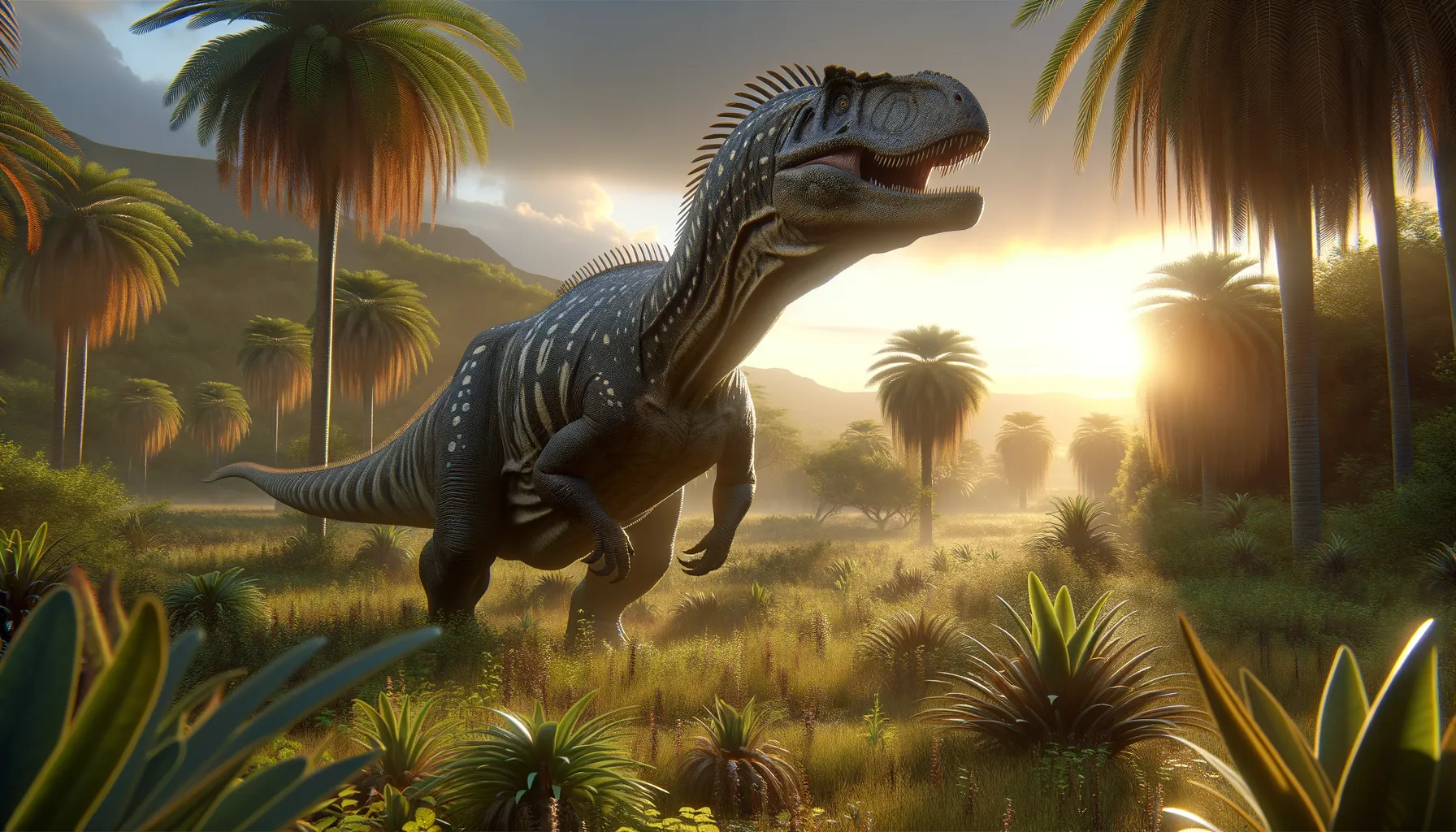
Cumnoria
Jurassic herbivore with surprising agility!
Period
Jurassic
Length
About 5 meters in length.
Height
Roughly 2 meters tall.
Weight
Slightly over half a ton.
Cumnoria was a plant-eating dinosaur that roamed the Earth during the late Jurassic period. It was relatively small compared to other dinosaurs but was well adapted to its environment. With its moderate size, Cumnoria likely displayed agility that helped it evade larger predators. Discovered in the 19th century, Cumnoria's fossils provide valuable insights into dinosaur evolution, highlighting features that link it to both earlier and later dinosaur species.
Diet
Cumnoria was a herbivore, feeding primarily on the lush vegetation available during the late Jurassic period. It most likely ate ferns, cycads, and other low-lying plants, using its beak-like mouth for cropping vegetation.
Hunting
Being a herbivore, Cumnoria did not hunt other animals. It foraged in herds, relying on the abundance of plant life for sustenance.
Environmental challenges
Cumnoria faced various environmental challenges, such as fluctuations in climate, which could affect food availability. Predation by larger carnivorous dinosaurs posed a significant threat, influencing its need for a communal lifestyle. Additionally, competition with other herbivores often drove Cumnoria to explore varied terrains for sustenance.
Speed
Moderate pace, typical of small herbivores.
Lifespan
Estimated around 20 to 30 years.
First discovery
First discovered by Harry Govier Seeley in the 19th century.
Fun Facts
- Cumnoria was a plant-eating dinosaur that lived during the Late Jurassic period, around 155 million years ago.
- It was first discovered in England, making it one of the dinosaurs known from relatively early fossil finds in Europe.
- Cumnoria was relatively small, about the size of a large dog, which made it quite different from some of the giant dinosaurs of its time.
- It is a distant relative of the more famous Iguanodon, sharing similar features like a thumb spike used for defense.
- Cumnoria is named after Cumnor, a village in Oxfordshire, close to where its fossils were first found.
- Scientists believe Cumnoria traveled in herds, which helped them protect themselves from predators.
- Cumnoria had teeth that were well adapted to chewing tough, fibrous plants, which made up its diet.
Growth and Development
Cumnoria's growth was steady, with juveniles requiring protection from adults within the herd. This growth pattern likely included periods of rapid development, especially during seasons of abundant food. As it matured, Cumnoria developed stronger limbs and a more robust body to support its herbivorous lifestyle.
Habitat
Cumnoria inhabited rich, vegetative regions that offered ample food resources. Its environment consisted of forests and open plains, providing diverse plant types for feeding. This habitat also necessitated finding safe areas to avoid predators.
Interaction with other species
Cumnoria lived in a dynamic ecosystem, often interacting with other herbivores in search of food. It occasionally faced territorial disputes with similar-sized dinosaurs over food sources. Predators such as Allosaurus were constant threats, leading to evolved behaviors for safety.
Natural lifespan
Cumnoria's natural lifespan was likely around 20 to 30 years, assuming it evaded predators and diseases.
Reproduction
Cumnoria reproduced by laying eggs, which hatched after a specific incubation period. Nesting sites were selected for safety to protect hatchlings from predators. Parental care likely included guarding and guiding young to available food sources.
Social behaviour
Cumnoria exhibited social behavior, often moving in herds, which provided safety in numbers. These social structures helped in efficient foraging and predator evasion. Communication within the herd was essential, likely involving vocalizations and visual signals.
Fossil locations
Fossils of Cumnoria have been primarily found in Oxfordshire, England. These sites offer significant insights into the late Jurassic ecosystem. The discoveries continue to enhance our understanding of the geographical range and lifestyle of this intriguing dinosaur.
